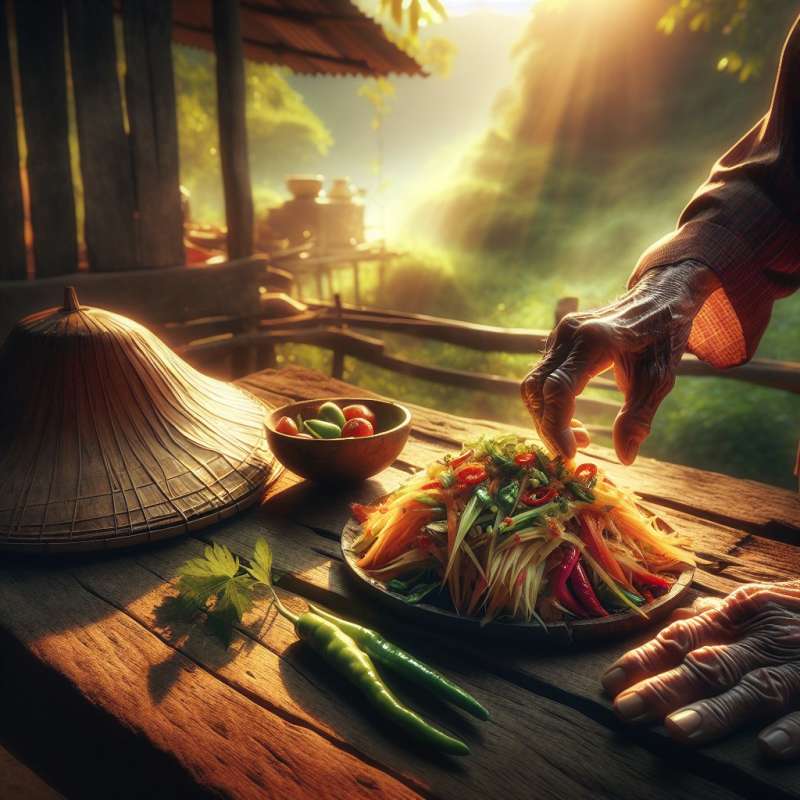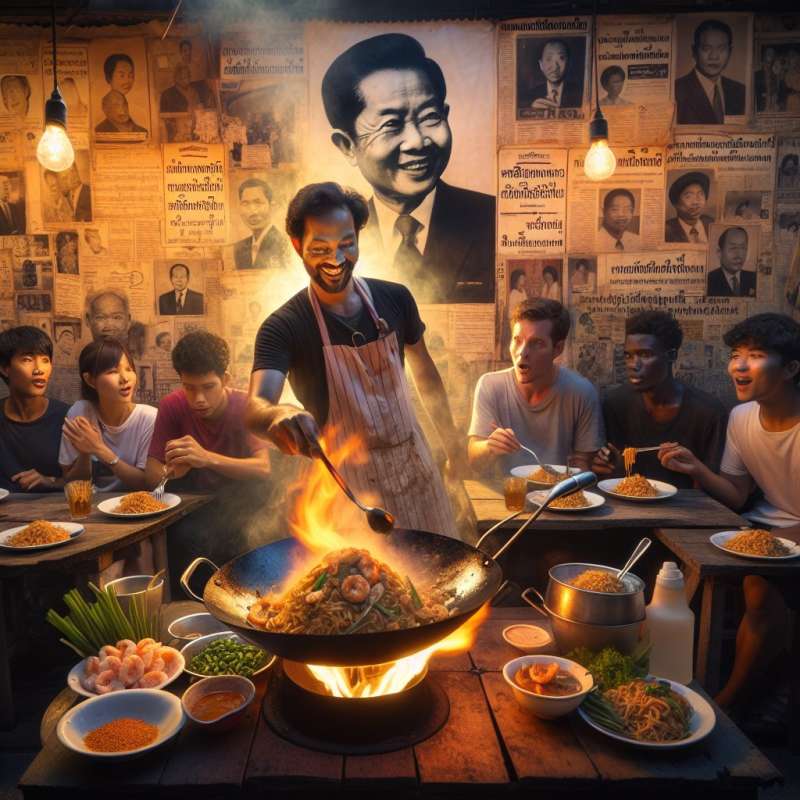
Savoring Som Tum
Originating from Laos, Som Tum is a spicy papaya salad that migrated to Thailand. The dish combines shredded green papaya, beans, chili, and lime, offering a complex taste balancing sweet, sour, salty, and spicy flavors.
Pad Thai: Beyond Borders
Contrary to common belief, Pad Thai isn't a time-honored traditional dish. It was promoted in the 1930s by Prime Minister Plaek Phibunsongkhram, seeking a national dish to reduce rice consumption and unify the country.
Moo Ping's Humble Beginnings
Moo Ping, Thailand's beloved grilled pork skewers, trace their roots to street vendors in Bangkok. They are marinated in coconut milk and cilantro, then grilled over charcoal, resulting in an irresistible smoky-sweet flavor.
Mango Sticky Rice Secret
Mango Sticky Rice, or 'Khao Niaow Ma Muang,' isn't just a dessert. The sticky rice is soaked in coconut milk and served with ripe mango. Its secret lies in choosing Nam Dok Mai mangoes, prized for their sweetness.
Guay Teow's Chinese Origin
Guay Teow, or noodle soup, is a popular Thai street food with a Chinese twist. Its history can be traced back to Chinese immigrants, who adapted their recipes to accommodate local Thai ingredients and tastes.
Roti: A Multicultural Treat
Thai Roti, a type of flatbread, reflects cultural assimilation. Influenced by Indian cuisine and adapted by Muslim Thais, it's often served with condensed milk and sugar, showcasing Thailand's culinary diversity.
Where did Som Tum originate?
Thailand's native recipe
Laos, later adopted by Thailand
Chinese traditional salad
Company